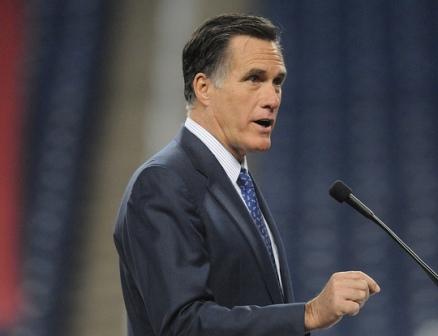
Gold bullion prices rallied to a one-week high at $1720 an ounce Wednesday morning in London, though they still looked set to record a loss on the month, while European stocks opened higher before losing some ground and US markets prepared to re-open after being closed for two days.
Silver bullion climbed to $32.37 an ounce, also up on the week, while oil and copper ticked higher and US Treasury bonds fell.
By Wednesday lunchtime in London, gold bullion looked set to record its first monthly loss since May, with spot gold trading nearly 3% below where it started October.
“There are those who are still looking for another dip, perhaps one that offers an opportunity to jump in sub-$1700, between now and year-end,” says a note from UBS. “The clear downtrend from earlier in the month has now been replaced by this consolidation phase. But the possibility of another attempt on the downside certainly cannot be ruled out.”
“There are a lot of event risks [for the gold market],” one trader in Singapore told newswire Reuters this morning. “Nonfarm payrolls, the US election, a change of power in China, plus the routine policy meetings of various central banks.”
“People wonder if Romney is going to be in power and what kind of monetary policy we will have,” adds UBS analyst Dominic Schnider, adding that the Republican candidate would likely replace Ben Bernanke as chairman of the Federal Reserve. “[Romney] is clearly not in favor of what the Fed is doing.”
A piece published by the Financial Times yesterday argued that a change in fed leadership following a Romney win would be bad for gold bullion prices, since the US dollar would strengthen.
“There’s really no clear indication that Republican presidents are better or worse for the Dollar than the Democrats,” counters a note from Standard Bank currency analyst Steve barrow this morning. “We don’t doubt that a strong Romney win, with victory in the Senate as well, would boost the Dollar while, if Obama narrowly hangs on to the presidency and loses the Senate, it would probably produce the worst possible knee-jerk response in the Dollar. However, in terms of the longevity of these reactions we’d be somewhat skeptical.”
US markets are set to reopen Wednesday, following two days of closure caused by Superstorm Sandy. Wednesday marks the end of the financial year for many US mutual funds, which have been unable to trade many securities since last Friday.
“That could be the wild card, how much [trading] they have to cram in,” says Donald Selkin, chief market strategist at National Securities, which manages around $3 billion.
Eurozone finance ministers meantime, who meet today, may grant Greece extra time to meet its austerity commitments, although disagreement remains on whether to write off more Greek debt, Bloomberg reports.
“The decisive phase for Greece has started,” reckons Carsten Bzerski, Brussels-based senior economist at ING Group.
An earlier deal to restructure Greece’s debt was agreed back in February. Losses were imposed on private sector creditors with the aim of bringing Greece’s debt-to-GDP ratio down to around 120% by 2020. Since then, however, Greece has missed a series of deficit targets.
“Filling the funding gap for Greece will again require some creativity,” says Bzerski. “A possible way out, at least in the short term, could be a combination of several options, such as lowering the interest rates on the first two Greek packages and front-loading parts of the funding of the second package. This could again kick the Greek can further down the road.”
Elsewhere in Europe, German retail sales rose 1.5% month-on-month in September, significantly more than many analysts forecast, although year-on-year sales were down 3.1%, official figures published Wednesday show. The Euro rallied against the Dollar following the release.
NEWS RELEASE.
October 31, 2012: Vancouver, BC – Balmoral Resources Ltd. (Stock Profile – TSXV:BAR & OTCQX:BALMF) today reported that the results for the remaining 17 holes from the summer drill program on the Company’s Martiniere Property have confirmed the very high-grade nature of the Footwall discovery, demonstrated continuity to the high-grade Hanging Wall Zone and have also continued to expand the broad Bug Lake Gold Zone. All three sub-parallel zones are located within a 100 metre wide, north-south (350 degree) trending corridor centered 600 metres east of the Company’s high-grade Martiniere West Zone.
“Over the course of the summer drill program at Martiniere we have gone from defining/expanding one high-grade gold zone (Martiniere West), to now having four zones contributing to the expanding gold inventory on the Property,” said Darin Wagner, President and CEO of Balmoral Resources. “With four zones now positioned to add shallow, high-grade ounces at Martiniere, and additional gold discoveries already identified throughout this large system, we have a clear growth path ahead of us and the financial means to drive that growth. Our exploration team is to be commended for the tremendous success of the summer drill program.”
With the definition of three new gold-bearing zones along the Bug Lake corridor, the Martiniere Property now hosts four high-grade gold zones. The Property also features two advanced prospects in the ME-16 and Central areas and a number of additional gold occurrences. All of these zones and prospects occur within a 1,500 metre long corridor and thus could potentially be developed as part of a single mine/mill complex on the Property.
Drilling continues to return individual multi-ounce gold assays from both the Footwall and Hanging Wall Zones. New longitudinal sections through the three gold zones in the Bug Lake area are now available on Balmoral’s website – CLICK HERE.
CompanyFeed™

Canadian diversified mining company Teck Resources has business units focused on copper, steelmaking coal, zinc and energy; and, Teck is also a significant producer of specialty metals such as germanium and indium. The company is the second largest seaborne exporter of steelmaking coal. Coal accounts for just under half of the revenue and just over half of the profits.
Teck Resources, as we know it today, was formed when Teck acquired 100% of Cominco in July, 2001. Originally founded in 1906 as The Consolidated Mining and Smelting Company of Canada (Cominco) and in 1913 as Teck-Hughes Gold Mines Limited, the company is one of Canada’s premier mining organizations.
A number of analysts in Canada have recently been weighing in on Teck Resources (Stock Profile – TSX:TCK.B & NYSE:TCK). Yesterday, Raymond James mining analyst Alex Terentiew initiated coverage of Teck with an Outperform Rating and an initial $40.00 price target.
Terentiew writes, “We recommend buying the stock on our view of a strong coal division with a robust cost structure that should benefit from a recovery in coal prices from current low levels; imbedded optionality on long-term copper and oil prices given the nominal value attributed to oil sands projects and three copper projects that could more than double Teck’s copper output by 2022; a relatively low-risk NAV, given that most of it is attributed to producing projects in safe jurisdictions; and an attractive valuation for what is one of the most liquid names in the Canadian mining space.”
The Raymond James analyst also notes, “Recent coal price weakness, including a low benchmark price of $170 per tonne for Q4-2012 has created an attractive entry point for the stock.”
On the flip-side, analysts at Scotia Capital cut their price target on shares of Teck Resources from $51.00 to $46.00 in a research note to investors on Thursday, October 25th. They now have an Outperform Rating on the stock. On the same day, analysts at BMO Capital Markets reiterated a Market Perform rating on shares of Teck in a research note to investors.
Shares of Teck Resources are currently trading on the TSX at $31.26 up $0.48 on the day. The NYSE is closed today due to Halloween monster storm Sandy.
NEWS RELEASE
October 29, 2012: Montreal, Quebec – Stornoway Diamond Corp. (Stock Profile – TSX: SWY) providing an update on construction progress on the Route 167 Extension, the road development project being undertaken by the Quebec Ministry of Transportation that will provide year round highway access to Stornoway’s 100% owned Renard Diamond Project by way of the communities of Mistissini and Chibougamau.
Construction on the 243km long Route 167 Extension began in February of this year, and is being undertaken in four segments, “A” to “D” (see diagram – click here). Construction on the southernmost segments A and B is progressing well, and to date 109km out of 143km has been completed to a standard sufficient for vehicle access.
In the north, tree clearing and ground surveying are approaching completion over the 100km of the road covered by segments C and D. However, Stornoway has been advised by the Quebec Ministry of Finance that it intends to conduct a review of overall construction expenditures on the Route 167 Extension prior to the granting of contracts to complete the civil works on these northernmost segments.
On the basis of the Ministry of Transportation’s current plan for the construction of the Route 167 Extension, the delay in awarding contracts for civil works on segments C and D will result in a delay in the provision of all-season road access to the Renard Diamond Project, which was previously scheduled for July 2013.
CLICK HERE – for more.
CompanyFeed™

Gold prices dropped below $1710 an ounce Monday morning in London, below where they ended last week, after failing to hold onto gains made in Asian trading. Silver prices dropped below $31.80 an ounce, also down from Friday’s close.
“Gold has been trading lower as it follows the US Dollar appreciation,” says Bayram Dincer, analyst at LGT Capital Management in Switzerland. “Gold is still range-bound, lacking any upside drivers above $1725 an ounce. The lower range of $1700 is perceived as a good support.”
“Market focus switches to this week’s US non-farm payrolls data [on Friday],” says a note from Barclays Capital, which cites $1698 as a support level for gold prices.
US core personal consumption expenditure data for September, a key inflation measure followed by the Federal Reserve, were published this morning, showing a slight rise in PCE inflation to 1.7%.
Over in India, traditionally the world’s biggest source of private gold demand, the Rupee fell to a five-week low against the Dollar Monday, pushing up the local price of gold.
Dussehra is a ten-day festival celebrated around India – this year it started on October 24th. Dussehra is centered around Lord Rama’s victory over the ten-headed demon king Ravana. The day also marks the victory of Goddess Durga over the demons Mahishasur.
“[There are] a few stray deals are there in the market,” one Mumbai importer told newswire Reuters, “[but] we haven’t seen big volumes yet compared to last week.”
The Reserve Bank of India raised its wholesale price inflation forecast for 2012-13 to 7.7% Monday, up from 7.3%. The central bank also cut its projection for India’s growth rate from 6.5% to 5.7%.
India’s finance minister P. Chidambaram meantime set a target of 3% for the government budget deficit by 2017 as part of a five-year plan of economic reforms announce Monday.
“[Chidambaram’s timing] suggests growing political pressure on the RBI to cut [interest] rates,” says a note from Nomura.
In Europe, Greece’s public sector creditors, which include the European Central Bank, should take losses on their holdings of Greek government debt, according to a draft report from the so-called ‘troika’ of lenders – the ECB, European Commission and International Monetary Fund – reported by German magazine Der Spiegel.
A restructuring of Greek debt back in February saw losses imposed on private sector bondholders. The ECB said it would forego any profits on maturing bonds bought below par in the market, but did not take losses as part of that deal.
“For the ECB, forgiving debt isn’t possible because it would be equivalent to indirect state financing,” ECB Governing Council member and Austrian central bank governor Ewald Nowotny said today.
German finance minister Wolfgang Schaeuble rejected the idea Sunday, describing it as unrealistic. Schaeuble has proposed creating a so-called ‘currency commissioner’ by extending the powers of the European Commissioner for Economic and Monetary Affairs to include a veto over national budgets.
“I explicitly support this proposal,” ECB president Mario Draghi said in an interview published by Der Spiegel Sunday. “If we want to restore confidence in the Eurozone, countries will have to transfer part of their sovereignty to the European level.”
In Madrid meantime Spanish prime minister Mariano Rajoy met with Italian prime minister Mario Monti Monday, three days after Monti told reporters that a Spanish bailout request “would make market speculation less aggressive”.
A formal bailout is a precondition of the ECB’s Outright Monetary Transactions program unveiled last month, which would see the central bank buy distressed sovereign debt on the secondary market.
“Rajoy is very much following his own route now,” says Gilles Moec, London-based co-chief European economist at Deutsche Bank. “Rajoy was probably pressed by Monti in August to accept a pre-emptive [bailout] …it would have made things so much smoother in Europe and for Italy as well.”
Italy sold €8 billion of six-month Treasury bills Monday, at a yield of 1.347% – down from 1.503% last month, and the lowest since March.
In the UK, mortgage approvals rose to a four-month high in September, according to figures published by the Bank of England this morning.
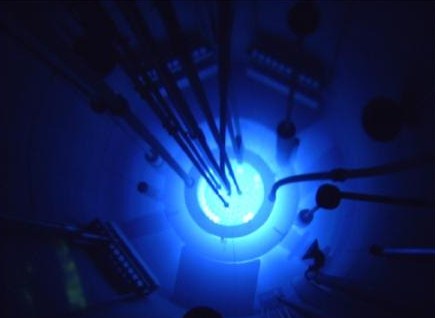
Under the terms of the 1993 government-to-government nuclear non-proliferation agreement, the United States and Russia agreed to commercially implement a 20 year program to convert 500 metric tons of HEU (uranium 235 enriched to 90 percent) taken from Soviet era warheads, into LEU, low enriched uranium (less than 5 percent uranium 235). This initiative was named the Megatons to Megawatts program.
To date 463.5 metric tons of bomb-grade HEU have been recycled into 13,345 metric tons of LEU – enough material to produce fuel to power the entire United States for about two years.
Overall, the blending down of 500 tonnes of Russian weapons HEU will result in about 15,000 tonnes of LEU over the 20 year lifespan of the program. This is equivalent to about 152,000 tonnes of natural U, or just over one year’s global demand.
The Megatons to Megawatts Program was supplying roughly 50% of the US’s LEU demand. Mining accounted for eight percent with the rest coming from other sources (rapidly depleting utility and government stockpiles).
Currently, the electricity for 1 in 10 American homes, businesses, schools and hospitals is generated by Megatons to Megawatts fuel.
The U.S. has 104 nuclear reactors operating, this is the largest fleet of nuclear reactors in the world making the U.S. the world’s largest uranium market. In 2011 the US nuclear reactor fleet required 55 million pounds of uranium.
The mined supply of uranium in the U.S., in 2011, was about four million pounds.
US Uranium Facts & Figures – as published May 2012
2011 Domestic Uranium Production Report’ by the U.S. Energy Information Administration (EIA):
- Total uranium drilling in 2011 was 10,597 holes covering 6.3 million feet, 47 percent more holes than in 2010;
- Expenditures for uranium drilling in the United States for 2011 were $54 million in 2011, an increase of 20 percent compared with 2010;
- U.S. uranium mines produced 4.1 million pounds U3O8 in 2011, 3 percent less than in 2010;
- Total production of U.S. uranium concentrate in 2011 was 4.0 million pounds U3O8, 6 percent less than in 2010;
- Total shipments of uranium concentrate from U.S. mill and ISL plants were 4.0 million pounds U3O8 in 2011, 22 percent less than in 2010;
- U.S. producers sold 2.9 million pounds U3O8 of uranium concentrate in 2011 at a weighted-average price of $52.36 per pound U3O8.
World Uranium Market
According to a recent report from the International Atomic Energy Agency (IAEA) and the Organization for Economic Cooperation and Development (OECD), by the year 2035:
“World nuclear electricity generating capacity is projected to grow from 375 GWe net (at the end of 2010) to between 540 GWe net in the low demand case and 746 GWe net in the high demand case, increases of 44% and 99% respectively.
Accordingly, world annual reactor-related uranium requirements are projected to rise from 63,875 tonnes of uranium metal (tU) at the end of 2010 to between 98,000 tU and 136,000 tU by 2035. The currently defined uranium resource base is more than adequate to meet high-case requirements through 2035 and well into the foreseeable future.
Although ample resources are available, meeting projected demand will require timely investments in uranium production facilities. This is because of the long lead times (typically in the order of ten years or more in most producing countries) required to develop production facilities that can turn resources into refined uranium ready for nuclear fuel production.”
Conclusion
Make no mistake; there is no shortage of uranium in the ground. What is in short supply is mined uranium.
It’s obvious, that starting very soon, and continuing for at least a decade (the time needed to develop, permit and construct a uranium mine), there is going to be a significant shortfall of uranium supply. Where is the US, and the rest of the world, going to source its needed uranium from?
Perhaps the most relevant questions for investors in the junior resource space are who is going to, in the very short term, commence production? And, who is positioned to help fill the looming supply gap?
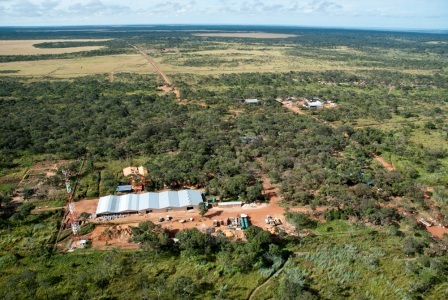
It what was the most widely anticipated IPO in Canada this year, Ivanplats raised $300 million last week and began trading on the TSX Exchange.
Ivanplats (Stock Profile – TSX:IVP) is Robert Friedland’s latest mining company to hit the public markets in what has been an 18-year story of exploration persistence in Africa. The company’s two primary projects are the Kamoa copper deposit in the Democratic Republic of Congo and the Platreef platinum-palladium-gold-nickel-copper deposit in South Africa.
The Ivanplats offering was priced at $4.75 a share valuing the company at a whopping $2.5 billion. The deal was priced slightly above the bottom end of the range – the company was seeking between $4.50 to $5.40 a share. Upon the IPO, shares of the company spiked to a high of $5.20 but have since been trending down and, today, are right back at $4.75.
The 63.3 million share offering was underpinned by one large investor, who purchased nearly a third of the shares offered. Ivanplats did not disclose the identity of the investor but rumor has it Brazilian billionaire Eike Batista may be the buyer. Regardless of identity of the buyer, the company did say the investor agreed to a six-month lock-up period.
In what was undoubtedly the biggest IPO of 2012, Facebook also hit the market this year and quickly tested and later broke its IPO support price of $38 per share. Four months later, Facebook’s shares hit a post-IPO low of $17.55 marking a decline of 54%.
Will Ivanplats follow the path of Facebook? Are these heavily-hyped IPOs simply too big to succeed?
As part of the transaction, Ivanplats said roughly $165 million in debt will be converted into about 40.6 million shares at the offering price. Plus, the company has more than 22 million options outstanding that are all in the money at this time.
Ivanplats $300 million IPO hardly compares to Facebook’s $16 billion IPO but both were the single largest IPOs for their respective exchanges in 2012. And, both were comparatively large liquidity events for their respective markets – Ivanplats IPO has already accounted for $67 million in shares trading hands.
Facebook’s IPO debacle on Nasdaq is now a part of history. A history, I’m sure, that Ivanplats would very much like to avoid.

Tuesday’s fall in the price of gold came amid “a market-wide retreat” said one analyst, with “across-the-board selling by speculators” according to another.
Gold bullion traded near 7-week lows for US and UK investors on Wednesday morning, maintaining the drop of 1% so far this week.
Looking at the gold futures market, “The reduction in short-term spec[ulative] positions suggests that the recent move lower in gold has been as a related to short-term investors,” writes Nomura analysts in a note.
“I think what you’re seeing is a reduction of investor concerns,” counters the CPM consultancy’s managing director Jeffrey Christian, speaking to MineWeb, “reflected in investors taking some of the profits out of their gold positions.
“[Investors] are looking more to repositioning themselves for slower economic growth.”
Despite press reports that Greece will get a further two years to meet its “austerity” budget targets, the Euro currency held onto its drop below $1.30 after new German data showed consumer confidence falling to a 32-month low.
All told, the 17-nation Eurozone “sank further into decline at the start of the fourth quarter,” added the Markit PMI survey, pegging the drop in manufacturing and service output at its fastest pace in more than three years.
Ahead of Wednesday’s policy update from the US Federal Reserve, and “while recent data flow has been encouraging,” writes Marc Ground at Standard Bank, “it is still apparent that the US economy still faces significant headwinds.
“Ironically, this may encourage risk appetite in financial markets…Consensus is that the Fed will continue its current program of easing until at least Q4, 2013. We would concur, but also see the potential for further easing.”
Shorter-term, Standard Bank’s commodity team “still feel that $1700 is a significant level of support and don’t expect it to be sustainably breached amid steadily improving physical demand for the metal out of Asia.”
Given the recent price decline, “Emerging-market demand for gold bullion has picked up,” agrees London market-maker HSBC in a note, “and this may act as a backstop against steeper price drops.”
Today in India – the world’s largest consumer market, where next month’s Diwali festival will mark the peak of annual demand – dealers saw “bargain hunting” by jewelers and other stockists, according to local press.
More broadly in Asia, “Investors [were] buying a little bit,” said Ronald Leung, head of Lee Cheong Gold Dealers in Hong Kong. But “they are not that aggressive.”
Silver prices also stalled after a brief rally early Wednesday, failing to hold above $32.00 per ounce. The broader commodity markets ticked higher, as did European stock markets after an initial fall.
“Market players will be paying close attention to this afternoon’s press conference in Berlin,” says Eugene Weinberg at Commerzbank in Frankfurt, when “Draghi will be explaining the ECB’s current monetary policy to German politicians.”
Looking ahead to the US Fed announcement due early afternoon Washington time, “the bank’s commitment to an expansionary course will probably be reiterated, meaning that opportunity costs for holding gold will remain low.”
To visit MiningFeeds comprehensive list of publicly traded gold mining companies – CLICK HERE.

After Monday’s Asian session saw new six-week lows, the Dollar gold price recovered some ground to trade near $1725 an ounce Monday morning in London, while stocks and commodities were broadly flat and US Treasury bonds fell.
“Both the weekly and daily charts are pointing for an initial move to $1693,” says the latest technical analysis from bullion bank Scotia Mocatta. “Any bounce into the upper $1730s will be a sell opportunity.”
The silver price fell to its lowest level in seven-weeks this morning, hitting $31.75 per ounce, before it too recovered some ground in London trading.
At the end of last week the Dollar gold price dropped more than 1% in less than an hour during Friday’s US trading, while the price of silver also fell along with US stock markets.
“Gold took out the week’s low [on Friday] and large stop loss orders were triggered,” says a note from Commerzbank, whose analysts say they expect physical gold demand “to pick up…at prices of just over $1700”.
“[This] is already evident in gold ETFs,” adds the bank’s Commodities Daily note this morning. The volume of gold held to back the SPDR Gold Shares (GLD), the world’s largest gold ETF, rose slightly on Friday to 1334.2, with 0.5% of its all-time high hit earlier this month.
In New York, the difference between the aggregate number of long (bullish) and short (bearish) contracts held by noncommercial gold futures and options traders on the Comex – known as the speculative net long – fell in the week to last Tuesday for the first time in over two months, weekly data published Friday show.
“After eight weeks of consecutive increases, net speculative length has fallen,” says Marc Ground, research strategist at Standard Bank. “Investor uncertainty over the ability of QE3 to support prices and/or the longevity of Fed’s open-ended commitment to easing has now been acutely manifest in futures market positioning.”
“We view this clean-out as positive for gold,” says a note from UBS. “By removing some of the excess froth the metal is in a better position to start climbing once again…[although] a further reduction is necessary.”
Over in Japan meantime, exports fell 10.3% last month, a sharper-than-expected drop, although the value of Japan’s trade deficit last month was smaller than expected, according to data published over the weekend.
“Global economic uncertainty remains high, and we must be vigilant to the effect of financial and currency moves on the economy and prices,” said Bank of Japan governor Masaaki Shirakawa Monday. “The BoJ will continue to pursue easy monetary policy via steady purchases of assets.”
Last month the BoJ extended its quantitative easing program, following announcements of new open-ended asset purchase programs by the European Central Bank and US Federal Reserve.
Here in Europe, Spanish prime minister Mariano Rajoy’s party extended its majority in the regional assembly of Galicia, Rajoy’s birthplace, in elections held over the weekend.
In the Basque region, the Basque Nationalist Party won enough seats to allow it to lead a government in the regional assembly.
Speculation continues over when and whether the Spanish government will request a bailout, which would pave the way for the ECB to buy Spanish sovereign debt on the secondary market.
“[Rajoy will] want to hold off a couple of weeks before asking for the bailout to save face and show they weren’t waiting for the elections,” reckons political scientist Ken Dubin at Madrid’s Carlos III University. “[But] it’s game on for budget cuts.”
“We think Rajoy should request European support before the Catalan elections,” adds Gilles Moec, London-based co-chief economist at Deutsche Bank. “The market is likely to react quite negatively to yet another nationalist success.”
Catalans go to the polls in their regional elections on November 25.
Elsewhere in Europe, German chancellor Angela Merkel has said Ireland’s financial sector is a “special case” with “unique circumstances”, in a joint statement with Irish prime minister Enda Kenny issued Sunday.
On Friday, Merkel said that any direct recapitalization of banks from Eurozone bailout funds would not be retroactive, implying countries such as Ireland would have to absorb the cost of their banks’ existing bad debts themselves.
“While the use of terms such as ‘unique’ and ‘special case’ will presumably soothe some of the concerns that followed Merkel’s recapitalization remarks, the lack of any explicit commitments on the bank debt issue means that these concerns are unlikely to entirely go away,” says Philip O’Sullivan, economist at NCB Stockbrokers in Dublin.
NEWS RELEASE
October 18, 2012: Montreal, Quebec – Stornoway Diamond Corp. (Stock Profile – TSX: SWY) announced today that the Québec Ministère des Ressources naturelles has issued the Mining Lease for the Renard Diamond Project. The Mining Lease represents the formal transference of mineral title from Québec to Stornoway, and is valid for a period of 20 years.
The Renard Diamond Project falls under the social and environmental protection regimes of the Canadian Environmental Assessment Act and the James Bay and Northern Québec Agreement. The principal regulatory approval required before construction can commence is the global “Certificate of Authorization” issued by the Québec Ministère du Développement Durable, de l’Environnement, de la Faune et des Parcs. Following successful Québec and federal government public hearings in June and August of this year, Stornoway anticipates receipt of the project’s Certificate of Authorization shortly.
Matt Manson, Stornoway’s President and CEO commented: “The Mining Lease is an important milestone in the mine permitting process in Québec. Its issuance ahead of the project’s Certificate of Authorization reflects the broad consensus of support that the project has achieved during the last two years of environmental study and community engagement. We remain on track to achieve regulatory approval for Renard this year.”
The Renard Environmental and Social Impact Assessment, as well as the project’s Environmental Baseline Study and Restoration Plan, are available in their entirety on Stornoway’s website – CLICK HERE.
CompanyFeed™
NEWS RELEASE.
October 18, 2012: Vancouver, BC – Strike Graphite Corp. (Stock Profile – TSXV: SRK) reports that srill core from the recently completed Simon Lake drill program as announced on October 2, 2012 has been prepared for metallurgical test work, and will be forwarded for processing upon selection of a laboratory with appropriate experience in processing graphitic ores.
Initial test work will quantify the flake size distribution(s) in each of the graphitic horizons, which the company views as a critical step in characterizing the Simon Lake graphite occurrences. Additional metallurgical testing will assist in understanding the processing requirements required to achieve a high-purity graphite product; which in turn will help guide the next round of drilling.
Future exploration will focus on those parts of the Simon Lake Graphite horizon with the most promising combination of grade, flake size , location and near surface tonnage potential. It is anticipated that this next drill program will commence during winter 2012/2013, contingent upon completion of the initial metallurgical work program.
Historic reports of coarse graphite at Simon Lake were confirmed during the drilling of the mineralized horizon in 2012. Results indicate a graphitic carbon content in the 3-4% range consistently over 20 – 30 m thickness intercepted at 100 to 200 m depths interpreted to continue to surface.
To read more – CLICK HERE.
CompanyFeed™

Small mining companies have enjoyed a decade long commodities boom. But now, many have long spent the monies raised via the equity markets and are struggling to come up with new cash to fund operations.
About $400 million was raised through fewer than 30 deals in the spring and summer of 2012, compared with roughly $2 billion raised via 80 deals a year earlier, according to Oreninc. Orenic tracks financing activity among junior miners listed in Canada on the TSX and TSX-V.
With declining share prices and volatile markets the access to capital for junior mining companies is tight. But the situation may be getting better.
In what is clearly a “show me” market, a number of junior exploration and development companies have managed to attract capital this fall. Primarily development stage gold and silver companies on the heels of strong drill results.
Recently, companies including Pilot Gold (Stock Profile – TSXV:PLG), Balmoral Resources (Stock Profile – TSXV:BAR & OTC:BALMF), and Torex Gold Resources (Stock Profile – TSX:TXG) have announced healthy bought-deal financings.
Although the situation is improving, the Prospectors and Developers Association of Canada estimates 80% of Canadian mining companies are struggling to raise capital. This climate has forced some miners to abandon the equity markets and look toward non-traditional funding sources.
In response to the market malaise, some junior mining companies have turned to the debt markets to fund operations and development projects. While others are looking to strategic partners and royalty streamers like Sandstorm Gold (Stock Profile – TSX:SSL & NYSE.MKT:SAND). In today’s market, some form of connection to off-take is becoming an important advantage to have in securing capital.
Raymond James mining analyst Brad Humphrey writes, “For the junior developers we have adjusted our P/NAV multiples (down) to reflect a higher associated funding and development risk.”
Ivanplats, the mining company founded by billionaire Robert Friedland, began its long-awaited process to list on the TSX. It was reported the company will raise at least $300-million at $4.75 a share – a move that some think, if successful, may reignite the mining equity markets.
NEWS RELEASE.
October 16, 2012: Vancouver, B.C. – North American Tungsten Ltd. (Stock Profile – TSXV:NTC) reports the executive committee of the Yukon Environmental and Socio-Economic Assessment Board (YESAB) has completed the draft screening report for North American Tungsten Corp. Ltd.’s MacTung project.
YESAB’s delivery of the draft screening report is a significant milestone for the MacTung project, moving it closer to the finalization of the environmental assessment as required under the Yukon Environmental and Socio-Economic Assessment Act (YESAA). The report concludes, “As a result of this assessment, the executive committee recommends to the decision bodies that the MacTung project be allowed to proceed without a review, subject to the terms and conditions specified in this report.”
Stephen Leahy, chairman and chief executive officer, stated: “With the draft screening report complete, NTC will now focus on its next objectives, of obtaining quartz mining and water licences. We would like to thank all of those that have contributed to the assessment process, including the Kaska First Nation, the Yukon government, Environment Canada, Natural Resources Canada, Fisheries and Oceans Canada, Yukon Conservation Society and other stakeholders. Participation by all parties has unquestionably benefited and improved the project as a whole. We believe the MacTung project will provide significant benefits to all Yukoners for years to come.”
To read more – CLICK HERE.
CompanyFeed™
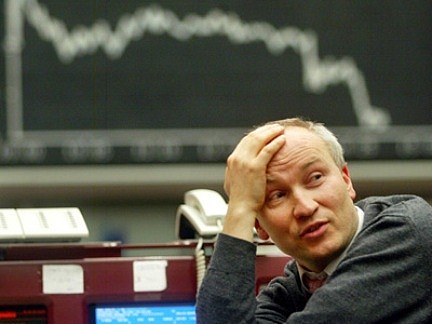
Gold bullion prices hovered in a narrow range below $1750 an ounce in Monday morning’s London session, after recovering some ground lost during Asian trading.
“We traded through lots of stop [losses] this morning,” said one trader in Singapore, after gold began the week by dropping more than ten Dollars to $1742 per ounce, its lowest level in nearly three weeks.
Like gold, silver bullion also fell during Monday’s Asian session, touching a five-week low before climbing to $33.33 per ounce by lunchtime in London.
“The failure to break above the March high at $37.47 is disappointing,” says Scotia Mocatta’s latest technical analysis report. “[But] the long term uptrend remains in place with support at $27.75.”
Stock markets and the Euro also rallied following a speech by US Federal Reserve chairman Ben Bernanke defending US quantitative easing and a promise from German leaders that nothing “uncontrollable” will happen in Europe.
In New York, the difference between the aggregate number of long (bullish) and short (bearish) contracts held by noncommercial gold futures and options traders on the Comex – known as the speculative net long – rose for the eighth week running in the week ended last Tuesday, according to Commodity Futures Trading Commission data published late Friday.
Spec long growth however was less than 2% on the week, the slowest rate for the entire eight-week period, which began before and continued after the Fed’s announcement of a third round of quantitative easing (QE3) last month, at which it committed to open-ended mortgage-backed securities buying.
“Momentum continues to slow,” says Marc Ground, commodities strategist at Standard Bank. “It appears as though investors continue to question the ability of QE3 to support prices and/or the longevity of Fed’s open-ended commitment to easing.”
Speaking at a seminar in Tokyo yesterday, Fed chairman Bernanke defended western quantitative easing policies against accusations that they impose adverse effects on emerging economies.
“I am sympathetic to the challenges faced by many economies in a world of volatile international capital flows,” Bernanke said, acknowledging that accommodative policies in the US “shift interest rate differentials in favor of emerging markets” and contribute to flows of private money into their currencies. “But by boosting US spending and growth, [monetary easing] has the effect of helping support the global economy as well.”
China’s exports meantime grow 9.9% year-on-year to September, almost double what many analysts forecast, official data published Saturday show.
“However, there is a sizeable seasonal effect in September, likely related to Christmas exports,” points out Stephen Green, head of research, Greater China at Standard Chartered.
Chinese consumer price inflation dipped to 1.9% last month, down from 2.0% a month earlier, according to figures published Monday.
“The drop was almost entirely due to a normalization of vegetable prices,” says Societe Generale economist Wei Yao. “However, other food components continued to rise…we expect more notable rebound [in inflation] to start in November.”
Here in Europe, Spain could ask for a bailout next month as part of a package that would also include assistance for Cyprus and revised conditions for Greece, according a Reuters report published Monday.
“The [reason for the combined package] is because the Germans and others do not want to go many times to national parliaments and have painful, tortuous debates there,” an unnamed Eurozone official told the newswire.
German chancellor Angela Merkel said today there will be no “uncontrollable developments” in the Eurozone, echoing the words of her finance minister Wolfgang Schaeuble.
“It will not happen that there will be a ‘Staatsbankrott’ in Greece,” Schaeuble told a forum in Singapore Sunday, using a German phrase for state bankruptcy despite delivering the rest of his remarks in English.
Sweden’s finance minister Anders Borg however predicted Friday that Greece will leave the Euro within six months. Sweden is not a member of the 17-nation single currency.
Gold bullion refiners in India have seen increased activity this year following the imposition of a higher import duty on refined bars back in January, the Economic Times of India reports.
In Africa meantime, 100 Chinese workers have been detained for suspected illegal gold mining, China Daily reports.
NEWS RELEASE.
October 15, 2012: Vancouver, BC – Balmoral Resources Ltd. (Stock Profile – TSXV:BAR & OTCQX:BALMF) today reported a number of additional high grade gold intercepts from seven holes completed in the ME-16/23 area of the Company’s Martiniere Property during the summer drill program. The ME-16/23 area, located up to 1,500 metres northeast of the Martiniere West Zone and 350 metres northeast of the Bug Lake Zone, marks the northeastern most portion of the Martiniere Gold System tested to date.
Today’s results confirm that Martiniere Gold System remains open to the northeast and to depth beyond the limits of current and historic drilling. Reported intercepts continue to indicate the presence of broad zones of anomalous gold mineralization surrounding high to multi-ounce, bonanza grade gold intercepts throughout the System. The Martiniere Property forms part of the Company’s Detour Gold Trend Project which spans over 82 kilometres along the Sunday Lake Deformation Zone in Quebec.
To learn more about Balmoral Resources – CLICK HERE.
CompanyFeed™
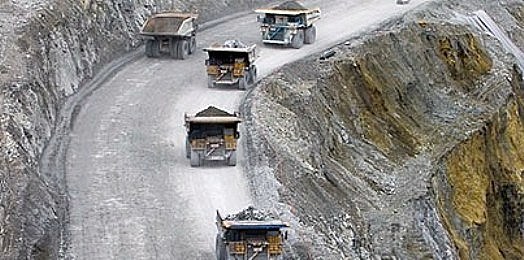
Freeport-McMoRan executives James R. Moffett, Chairman of the Board, and Richard C. Adkerson, President and Chief Executive Officer, said in their most recent earnings report, “We are positive about the long-term fundamentals of the metals we produce.” This despite concerns about weak global growth and slowing Chinese demand.
Freeport-McMoRan Copper & Gold (Stock Profile – NYSE: FCX) is the world’s largest publicly traded copper producer. The company’s assets include Grasberg, the world’s largest copper and gold mine in terms of recoverable reserves. FCX produced 1.44 million metric tons (mt) of refined copper in 2010, equal to 9% of the world total. The company currently pays a quarterly cash dividend of $0.3125 per share resulting in an annual dividend yield of $1.25 or 3.1%.
At 40% of world usage China is the big buyer of copper. Copper is critical for China and the country has imported unbelievable tonnages over the years. But according to the Beijing Antaike Information Development Co. copper consumption is expected to expand this year at the slowest rate since 1997.
However, the International Copper Study Group (ICSG) reports:
“The apparent refined copper balance for the first half 2012 indicates a production *deficit of 473,000 t (a seasonally adjusted deficit of 292,000 t)… As of the end of August, copper stocks held at the major metal exchanges (LME, COMEX, SHFE) totaled 434,277 t, a decline of 110,334 t from stocks held at the end of December 2011 and a decrease of 14,520 t from stock levels at the end of July 2012.”
Also, according to ICSG Copper Market Forecast 2012-2013, in 2012, world refined copper production is projected to increase by only about 2.5% to reach 20.15 million metric tonnes (mmt). Global Industry Analysts forecasts the global market for copper is projected to reach 27.5 mmt by the year 2017.
The world will need 7.35 million metric tonnes or 1.47 million metric tonnes of new copper production per year for the next five years to meet anticipated demand.
China’s Copper Market
According to Beijing Antaike, the state run nonferrous metals consultancy, Chinese copper consumption was up 7.8 percent in 2011 to 7.33 mt, is expected to grow 5.9 percent to 7.76 mt in 2012 and to reach 10 mt per year by 2020.
China has recently, and for the first time ever, revealed the size of its “copper inventories” and they scared the hell out of investors when they did it. Currently there is an estimated two million metric tons of copper in China’s warehouses.
“That has to be put in context that over the next 5 years, China will probably consume 50 million tons of copper. So there is a major strategic shortfall in the copper market from a Chinese perspective and those warehouses are really part of that longer-term solution…We don’t think it’s a big problem for the copper market going forward.” – Andrew Keen.
Let’s consider Chinese copper inventories from another perspective – 2011’s 7.33 mt of copper usage works out to 20,082 tonnes a day, so two million tonnes of copper is 99 days of inventory – just three months worth of copper, two million tonnes for a country that, even if copper usage does not grow another tonne, will use 36.65 mt over the next five years, remember no one is forecasting Chinese copper consumption to stop growing, just slowing to between 2-4 percent growth.
Also Consider
“A market can appear to be in a deficit and a surplus simultaneously because economic forecasts only look at production and demand for the calendar year and exclude excess stocks carried over from the past. The current oversupply – high inventory levels – are a consequence of the economic conditions of the last three years, current and future supply deficits will be strong enough to digest that oversupply.
As much as one million metric tons of surplus isn’t available for sale, it has to be part of the ebb and flow of moving copper down the line to the ultimate end product. Up to 600,000 metric tons is kept as China’s rainy-day fund.” – Justin Lennon, metals analyst, Mitsui Bussan Commodities.
Do you think China might have an interest in inflating the size of its stockpiles to push prices down? And really, does it matter if they have two million tonnes or three million tonnes today?
“Whatever the Chinese say that stocks are, in the end they still need copper.” – George Cheveley, metals and mining portfolio manager at Investec Asset Management.
And tomorrow they will need more, a whole lot more, even if future economic growth “only” clocks in at an annual 7.5 percent compounded.
For MiningFeeds comprehensive list of publicly traded copper companies – CLICK HERE.
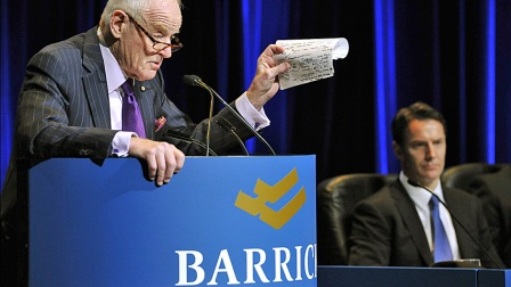
On June 6, 2012 Barrick Gold made the surprising announcement to replace Aaron Regent as CEO. At the time, although there was plenty of frustration over Barrick’s share price performance, many investors felt the company was moving in the right direction under Mr. Regent’s leadership.
Forbes noted, “Barrick’s stock price gained nearly 30% under Regent’s tenure, failing to keep up with the 49% raise in the price of bullion, despite performing in line with its peers.”
Regent, among other things, was credited for unwinding the company’s gold hedge book. Investors also reacted favourably when he increased dividends and spun out the African assets. As for the acquisition of copper miner Equinox Minerals, that still remains a point of contention.
Some feel the company greatly overpaid for Equinox – the deal was valued at $7.5 billion – perhaps overpaying by as much as 50% according to analyst George Topping of Stifel Nicolaus.
Ironically, in a letter to shareholders co-founder and chairman of Barrick (Stock Profile – TSX:ABX & NYSE:ABX) Peter Munk hinted that acquiring more base metal assets was one way Barrick could increase shareholder value. So what, exactly, is going on at Barrick and is the company’s stock a Buy?
One thing is certain, at 84 years of age, Peter Munk, is clearly still in charge. According to Munk, “We are fully committed to maximizing shareholder value, but have been disappointed with our share price performance.”
Upon Regent’s ousting, former Executive Vice President and Chief Financial Officer Jamie Sokalsky was appointed President and CEO. Since then, Barrick has focused on cost controls to generate cash flow. And, distributing cash flow to shareholders would certainly be one way to improve the stock’s performance.
In support of the new direction, BMO Capital Markets rated Barrick’s shares as Outperform in a research note with a $44.00 price target on the stock.
This week, Dundee analyst Ron Stewart said Barrick may be among the first gold stocks to regain momentum. Stewart notes that Barrick produced 1.9 million ounces of gold in the third quarter – up from 1.74 million in the second. Mr. Stewart thinks the company will consistently generate strong free cash flows starting next year, a key part of chief executive officer Jamie Sokalsky’s corporate strategy.
Stewart increased his discounted cash flow multiple on Barrick’s shares to 1.2 times from 1.0 times, which boosted his price target to $55 per share – up from $42.
Barrick Gold has a portfolio of 26 operating mines, and exploration and development projects located in North America, South America, Australia, and Africa. The company has a price earnings ratio of 9.6, equal to the average metals & mining industry, but well below the S&P 500 average price earnings ratio of 16.2.
Comparatively, Goldcorp (Stock Profile – TSX:G & NYSE:GG) has a whopping PE ratio of 27.3 while beleaguered gold miner Kinross Gold (Stock Profile – TSX:K & NYSE:KGC), which also replaced their CEO this summer, tops Barrick with a 13.4 price to earnings ratio.
To visit MiningFeeds comprehensive list of gold mining companies – CLICK HERE.
NEWS RELEASE.
October 12, 2012: Vancouver, BC – Goldgroup Mining Inc. (Stock Profile – TSX: GGA & OTC:GGAZF) announced the appointment of executive chairman Gregg Sedun as president and interim chief executive officer, replacing Keith Piggott. Mr. Piggott is a major shareholder of the company and continues to serve on the company’s board of directors. This leadership appointment is effective immediately.
Mr. Sedun stated: “On behalf of our board, I would like to thank Mr. Piggott for his significant contribution to Goldgroup’s development over the last six years. The board has determined that the company’s focus going forward remains in optimizing capital and other costs, in addition to streamlining permitting and operational processes in order to ensure production at our flagship project, Caballo Blanco, is completed on a timely basis.”
The board is taking steps to fill the chief executive officer position in an expeditious manner. As interim chief executive officer, Mr. Sedun will provide strong continuity in the transition period and will supervise day-to-day operations of the company.
Gregg Sedun, LLB, has been executive chairman of Goldgroup from its inception six ago years and has extensive knowledge of the company’s operations, in addition to 29 years of expertise in legal, corporate finance and executive management positions for publicly traded resource companies. Mr. Sedun has been involved as a director and/or founding shareholder in a number of successful companies, including as founding director of Diamond Fields Resources Inc., which was acquired by Inco for $4.3-billion. He was also a founding director of Adastra Minerals Inc., which was acquired by First Quantum Minerals Ltd. for $275-million, and was part of the founding shareholder group of Peru Copper Inc., which was acquired by Chinalco in an all-cash $840-million takeover.
To learn more about the appointment – CLICK HERE.
CompanyFeed™
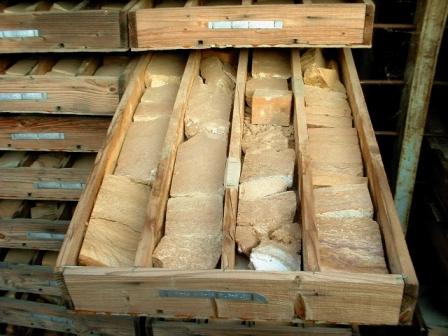
The International Monetary Fund today warned that the Eurozone could see capital flight of $2.8 trillion unless the region’s leaders “act swiftly to restore confidence.” In turn, Italy saw its 12-month borrowing costs jump this morning from 1.69% to 1.94% at an auction of €8 billion in new short-term debt.
“The industrialized world is stuck in a severe debt and growth crisis,” says Andrew Bosomworth, head of portfolio management in Germany for US bond-fund giant Pimco, quoted by German news magazine Spiegel. “Central banks are fighting the disease with monetary infusions of previously unknown proportions, and the side effect is a slow but dangerous devaluation of money.”
Writing in the Irish Times, “The monetary environment has rarely looked more favourable for gold,” says economic analyst and consultant Charlie Fell. “The structural headwinds to robust economic growth, not to mention central bank rhetoric, virtually assure negative real short-term policy rates for many years to come. As a result, it is highly unlikely that the bull market in gold is set to end in the immediate future.”
Following largely peaceful protests in Athens on Tuesday against German chancellor Merkel, Greek unions today called an anti-austerity general strike for Thursday, October 18th.
But it’s not all doom and gloom for Greece. According to Bloomberg, “Fast Track” approvals of four gold mining projects in Greece will see it become Europe’s largest producer by 2016. Eldorado Gold (Stock Profile – TSX:ELD & NYSE:EGO) and Glory Resources are pushing projects forward.
“There’s clearly evidence that Greece has woken up to the potential of their mining industry,” said Jeremy Wrathall, chairman of Perth-based Glory Resources. “Politicians increasingly realize that a pro-mining stance is appropriate due to job creation potential.”
Environmentalism and local opposition remains the biggest obstacle to gold mining in Greece. Eldorado is betting more than $3 billion that objectors to expanding gold exploration in Greece will be swayed. The company intends to invest about $1 billion in the next five years.
Greece will account for about 21 percent of Eldorado’s 2016 gold production of about 1.7 million ounces, according to BMO Capital Markets research.
“I think people realize we are part of the solution, that part of the economic recovery will be due to mining,” said Eldorado’s VP & General Manager, Greece, Eduardo Moura. “I’m convinced that people who oppose our projects will come to realize that mining can be a positive force for change.”
Raymond James analyst Brad Humphrey recently rated Eldorado’s stock Outperform after visiting the company’s projects in Greece. He writes, “We continue to recommend investors accumulate Eldorado shares and are maintaining our Outperform rating and $18.50 target price. Overall, we were impressed with what we saw in Greece, as there are some clear opportunities within the country for Eldorado and, of course, some challenges.”
Eldorado’s shares are currently trading at $13.84 down $0.13 at publication time.
NEWS RELEASE.
October 5, 2012: Vancouver, BC – Balmoral Resources Ltd. (Stock Profile – TSXV:BAR & OTCQX:BALMF) reported that drilling has resumed on the Company’s Martiniere Property in Quebec. The Martiniere Property forms part of the Company’s Detour Gold Trend Project which spans over 82 kilometres along the Sunday Lake Deformation Zone in Quebec.
The fall drill program will primarily focus on extending the recently identified, shallow high grade gold discoveries associated with the Footwall, Lower Bug, Upper Bug and Hanging Wall structures within the broader Bug Lake Fault Corridor on the Martiniere Property. Gold mineralization within the north-south trending Bug Lake Corridor has now been traced for at least 400 metres along strike and remains open in all directions.
Revised schematic long and cross-sections and a drill/geology plan for the Martiniere gold system in the Bug Lake area are now available on the Company’s website – CLICK HERE – for more.
CompanyFeed™
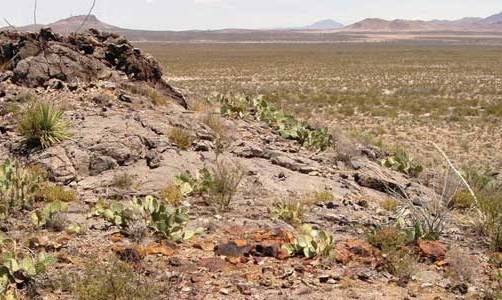
This week MAG Silver released the maiden resource estimate for its 100% owned Cinco de Mayo project in Mexico. It indicated contained resources of 52.7 million ounces of silver, 785 million pounds of lead and 1.8 billion pounds of zinc.
In response to the news, Canaccord Genuity analyst Nicholas Campbell, who called the results “robust”, wrote that Cinco de Mayo “demonstrates the potential to develop the project into a significant high-grade underground silver-zinc-lead mine.”
Campbell raised his price target on MAG Silver (Stock Profile – TSX:MAG & NYSE MKT:MVG) by $1 to $18 and maintained a Speculative Buy rating on the company.
Also this week, Resource Opportunities analyst Lawrence Roulston stated the recent preliminary economic assessment for MAG’s flagship project Juanacipio showed “very attractive returns” based on a stand-alone operation.
Roulston thinks the “enormous value” MAG has created at Cinco de Mayo and other exploration projects is being completely overshadowed by Juanacipio. He predicts the company may elect to spin out some of its properties. In Roulston’s opinion, MAG is “clearly a case where the sum of the parts would be greater than the present value.”
On September 5th, 2012 MAG Silver closed a private placement offering for gross proceeds of approximately $33.1-million. The company has earmarked the money to finance its share of the recently announced permitting and underground development program for Juanicipio and to advance the Cinco de Mayo project.
Shares of MAG Silver are currently trading at $12.21 on the TSX Exchange – up two pennies on the day.
Disclosure: at publication date MAG Silver is a client of MiningFeeds.
NEWS RELEASE.
October 4, 2012: Vancouver, BC – Balmoral Resources Ltd. (Stock Profile – TSXV:BAR & OTCQX:BALMF) announced it has closed the previously announced flow-through bought deal private placement with a syndicate of underwriters led by Canaccord Genuity Corp. and including Cormark Securities Inc. and Laurentian Bank Securities Inc. With full subscription of the over-allotment option granted to the underwriters, the Company has issued 6,960,000 flow-through common shares at a price of $1.15 per flow-through common share for gross proceeds $8,004,000.
The proceeds raised from the Offering will be used to accelerate the exploration on the Company’s Detour Gold Trend Project, including additional drill testing of the Company’s Martiniere West, Bug Lake and recent high-grade Footwall discovery on the Martiniere Property and testing of high priority targets on the other Detour Gold Trend Properties.
To learn more about Balmoral Resources – CLICK HERE.
CompanyFeed™
NEWS RELEASE.
October 3, 2012: Vancouver, BC – Balmoral Resources Ltd. (Stock Profile – TSXV:BAR & OTCQX:BALMF) announced results from 9 drill holes which extend the strike length of the Bug Lake Zone to 400 metres and confirm the presence of significant high-grade gold mineralization along the length of the Bug Lake structure. The Zone remains open in all directions with additional drill results pending. The Martiniere Property forms part of the Company’s Detour Gold Trend Project which spans over 82 kilometres along the Sunday Lake Deformation Zone in Quebec. Balmoral’s holdings adjoin those of Detour Gold who are in the final phases of construction of what will be, according to Detour’s commentary, Canada’s largest gold mine.
Drill results were highlighted by drill hole MDE-12-46, which returned an intercept of 15.09 g/t gold over 5.18 metres including, 1.58 metres grading 44.27 g/t gold from the central portion of the Bug Lake Zone. Six of the nine holes included in today’s release returned at least one assay result > 20 g/t gold.
Hole MDE-12-39 intersected a bonanza grade structure, which returned an intercept of 195.50 g/t gold over 0.97 metres, in the hanging wall above the Bug Lake Zone at less than 30 metres vertical depth.
“Our understanding of the Bug Lake Gold Zone continues to evolve as we expand this new, open-ended gold discovery to the north, to the south and to depth,” said Darin Wagner, President and CEO of Balmoral Resources. “We are obviously pleased to see a number of high to bonanza grade gold intercepts from the Zone which suggests potential similar to that observed in the nearby West Zone and Footwall discovery.”
For a table of the results – CLICK HERE.
CompanyFeed™
NEWS RELEASE.
October 3, 2012: Vancouver, B.C. – MAG Silver Corp. (Stock Profile – TSX:MAG & NYSE MKT:MVG) announces announce that Roscoe Postle Associates Inc. (“RPA”) has completed the first independent mineral resource estimate for the Bridge Zone/Jose Manto on its 100% owned Cinco de Mayo Property in northern Chihuahua, Mexico.
Inferred Mineral Resources are estimated to be 12.45 million tonnes at 132 grams per tonne (“g/t”) ( 3.9 ounces per ton (“opt”)) silver, 0.24 g/t gold, 2.86% lead, and 6.47% zinc (9.33% lead plus zinc).
An economic cut-off grade set at a net smelter return (“NSR”) of US$100 per tonne was applied as the base case for this estimate. No data from recent drill hole CM-12-431 in the newly discovered deep Pegaso Zone (see press release dated July 18, 2012) was used in this estimate.
Sensitivity analysis of the new resource to higher NSR cut-offs reveals significant higher grade portions. This is demonstrated by the $150 NSR cut-off case which gives a total of 9.4 million tonnes of 151 g/t (4.4 opt) silver, 0.26 g/t gold, 3.37% lead, and 7.35% zinc.
“We are pleased, but not surprised, to see a significant resource begin to materialize at the Bridge Zone/Jose Manto” said Dan MacInnis, MAG’s President and CEO. “Combined with Juanicipio, Cinco de Mayo now gives MAG two significant high grade assets. Although we are still in the early stages, Cinco de Mayo is showing very strong potential for an increase to a substantial size. We expect to follow our exploration model and link the Bridge Zone/Jose Manto to the new Pegaso Zone discovery at depth. The 61 metre thick massive sulphide intercept in Pegaso Zone discovery hole CM-12 431, (Press Release July 18, 2012) strongly indicates that there is abundant potential for a much larger resource to emerge at depth.”
To learn more about the results – CLICK HERE.
CompanyFeed™

“Gold is just another currency,” well-known investor and newsletter publisher Dennis Gartman told CNBC Tuesday. “It is doing well in other currency terms…I am not a gold bug. I don’t think the world is coming to an end, but I think everyone needs to own some gold.”
Western households grew more bullish towards gold last month, according to Gold Investor Index data published by online gold and silver exchange BullionVault Wednesday.
The Gold Investor Index, which tracks the balance between gold buyers and sellers on BullionVault‘s exchange, rose to 52.5 last month, up from 52.1 in August. A figure above 50 indicates more individual buyers than sellers during the month.
September saw the European Central Bank unveil its unlimited sovereign bond buying program, Outright Monetary Transactions, while the US Federal Reserve announced an open-ended third round of quantitative easing. The Eurozone crisis also returned to the headlines.
“Private households are continuing to join the bull market,” says BullionVault head of research Adrian Ash. “But the response by retail investors to both QE3 and the latest phase of the Eurozone crisis is more measured…than the recent price action alone might suggest.”
“We do not, at this stage, believe that another significant up move [for gold], that is to say to the $1900 level, will be seen before further consolidation has occurred,” says Axel Rudolph, senior technical analyst at Commerzbank. “The $1815 area may be reached, though.”
Gold prices are up nearly $100 an ounce since the start of September, while the US Dollar Index, which measures the Dollar’s strength against a basket of other currencies, has fallen more than 2% since August 31, the day Fed chairman Ben Bernanke hinted at QE3 during a speech at the annual Jackson Hole conference.
Dollar gold prices hit new 2012 spot market high earlier this week, touching $1791 per ounce, but have been trading in a much narrower range over the last fortnight than they were over the four previous weeks.
“We are going through a bit of a consolidation period,” says Jeremy Friesen, commodity strategist at Societe Generale. “My suspicion is that we’ll get more monetary policy responses from other central banks as the Fed program kicks off and the ECB program starts, probably by the end of this month. That’s bullish for commodities like gold.”

Gold prices hovered in a tight range just below $1780 an ounce for most of Tuesday morning in London, just below a new 2012 spot market high touched yesterday following comments from US Federal Reserve policymakers.
Silver prices traded just below $35 per ounce, close to seven-month highs, while stocks and the Euro ticked higher despite warnings that Spain is underestimating the amount of recapitalization its banks need.
Commodities were broadly flat, with copper showing some strength, while major government bond prices fell.
A day earlier, Dollar gold prices touched a new 2012 high at $17971 per ounce during Monday’s US session, while the gold price in Euros set a fresh all-time record at €44,583 per kilo (€1386 per ounce).
“The gains were prompted by Fed President Evans’ comments that the quantitative easing measures adopted [by the Fed last month] did not go far enough,” reckon analysts at Commerzbank.
“On top of this, Fed Chairman Bernanke expressed concern about weak economic growth, making additional bond purchases a possibility… In a climate of ultra-loose monetary policies and the relentless Eurozone debt crisis, demand for gold as a store of value and alternative currency is likely to remain strong.”
“We believe investors should consider allocating gold and other precious metals to a diversified investment portfolio,” say analysts Nicholas Johnson and Mihir Worah at world’s largest bond fund Pimco. “The supply of gold is constrained, and we see demand increasing consistent with global economic growth on a per capita basis. Regarding inflation in particular, we feel that the Federal Reserve’s decision to begin a third round of quantitative easing makes gold even more attractive.”
Holdings of gold backing the world’s largest gold ETF, SPDR Gold Shares (GLD), rose by nearly 2 tonnes to 1322.6 tonnes yesterday, the first day of the new quarter, though they remain 0.7% off last Tuesday’s all-time high.
Investment bank UBS meantime has said it expects a boost in physical gold trading volumes when China returns from a week-long holiday next week.
Spain’s banks could need up to €105 billion to absorb potential losses on their loans, according to ratings agency Moody’s. That’s more than last Friday’s €60 billion estimate and more than the €100 billion credit line Spain agreed with other Euro members in June.
“The recapitalization amounts published by Spain are below what we estimate are needed for Spanish banks to maintain stability in our adverse and highly adverse scenarios,” say Moody’s analysts Maria Jose Mori and Alberto Postigo. “If market participants are skeptical about the stress test, negative sentiment could undercut the government’s efforts to fully restore confidence in the solvency of Spanish banks.”
Spain’s government meantime is ready to ask for a bailout to help fund public spending as soon as next weekend, although Germany would prefer it to wait, Reuters reports.
“It doesn’t make sense to send looming decisions on Greece, Cyprus and possibly also Spain to the Bundestag one by one,” a senior German source told the newswire. “Bundling these together makes sense, due to the substance and also politically.”
NEWS RELEASE.
October 2, 2012: Vancouver, BC – Strike Graphite Corp. (Stock Profile – TSXV: SRK) released drill results for the spring 2012 exploration program at the Simon Lake graphite property, located in north-central Saskatchewan.
Blair Way, chief executive officer, remarked: “These initial drill hole results are very exciting and continue to verify our interpretation of continuity for the 25-kilometre strike length of the electromagnetic conductor. The high graphitic carbon content and potential scale of the Simon Lake graphite occurrences warrant follow-up metallurgical test work to confirm flake-size distribution and more drilling along the strike length of the conductor.”
During late spring, the company completed four diamond drill holes within the historic Simon Lake trend (visit the company’s website for a location map). Three conductive zones were targeted and tested small portions of the approximately 25-kilometre conductive trend. Results of the exploration program confirm substantial widths to the graphitic horizon, which are thought to form a continuous mineralized horizon that continues to surface.
Highlights:
- Hole SL-12-002 — 93.8 metres of 2.11 per cent graphitic carbon (Cg), including 32.8 metres of 3.3 per cent Cg;
- Hole SL-12-003 — 25.3 metres of 3 per cent Cg, including 11.2 metres of 5.03 per cent Cg;
- Hole SL-12-004 — 25.1 metres of 3.21 per cent Cg, including 15.2 metres of 4.46 per cent Cg.
To read the full news release – CLICK HERE.
CompanyFeed™

Continental Gold released an updated mineral resource estimate for the Yaragua and Veta Sur vein systems at its 100 percent owned Buritica project in Antioquia, Colombia. Undertaken by independent consultants from Mining Associates, the mineral resource estimate at a gold cut-off grade of three grams per tonne Measured + Indicated is 1.64 million ounces of gold; 4.6 million ounces of silver; and 55.8 million pounds of zinc.
Commenting on the news, Raymond James analyst Gary Baschuk wrote, “We are maintaining our Outperform rating and $11.25 target price (6 to 12 months). We believe the new resource is a positive achievement but we require additional detail, expected to be released within 45 days in the Technical Report, to establish the expansion potential of the deposit beyond our estimated doubling of the initial resource.”
Baschuk continues, “Our $11.25 target price is based on a cash-adjusted 0.96X P/NAV multiple, based on our view of the high grade nature of the deposit and the potential for expansion along strike and at depth, applied to our NAVPS estimate of C$11.84. As of September 30, we estimate CNL had approximately $101 million in cash and equivalents.”
TD Securities analyst Daniel Earle also likes the news. Earle writes, “Buritica one of the largest undeveloped high-grade resources in the world and enhances its attractiveness to potential mid-tier and senior gold companies. We maintain our Speculative Buy recommendation… and our 12-month target price rises to $15.00/share (from $12.00).”
Continental Gold (Stock Profile – TSX:CNL & OTC:CGOOF) is an advanced-stage exploration and development company with a portfolio of precious metal projects in Colombia.
Formerly the largest gold producer in South America, Colombia has produced over 80 million ounces of gold. For many years, civil unrest prevented the development of the country’s mining industry.
Improved security conditions since 2002 have paved the way for a new wave of modern exploration and mining development. The increased stability in Colombia is a result of the Democratic Security Policy introduced by the administration of former President Alvaro Uribe.
Shares of Continental Gold closed the day at $9.90 up $1.09 for a gain of 12.4%; and, within 13% of Baschuk’s target price.
If you would like to receive our free newsletter via email, simply enter your email address below & click subscribe.
CONNECT WITH US
Tweets
Tweet with hash tag #miningfeeds or @miningfeeds and your tweets will be displayed across this site.
MOST ACTIVE MINING STOCKS
Daily Gainers
 Lincoln Minerals Limited Lincoln Minerals Limited |
LML.AX | +125.00% |
      |
GCR.AX | +33.33% |
      |
CASA.V | +30.00% |
      |
AHN.AX | +22.22% |
      |
ADD.AX | +22.22% |
      |
AZM.V | +21.98% |
      |
NSE.V | +21.05% |
      |
DYG.V | +18.42% |
      |
AAZ.V | +18.18% |
      |
GLA.AX | +17.65% |


 Follow us on Twitter
Follow us on Twitter Become our facebook fan
Become our facebook fan








